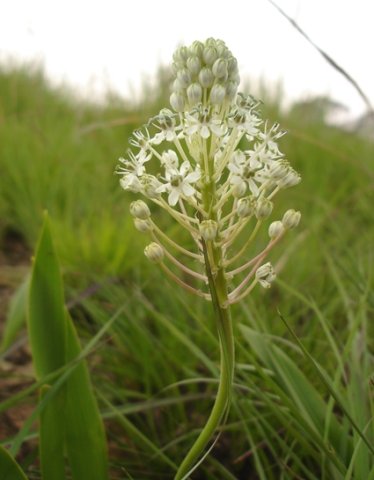Schizocarphus nervosus

Author: Ivan Lätti
Photographer: Judd Kirkel Welwitch
Schizocarphus nervosus is commonly known as the white squill or white scilla, in Afrikaans as the sandlelie (sand lily) and previously scientifically as Scilla nervosa and Ornithogalum nervosum respectively, as well as several other earlier names. It is a winter deciduous, bulbous perennial that tends to clump and reaches from 15 cm to 40 cm in height. The bulb is covered in coarse, fibrous tunics. This is the only species in a monotypic genus.
The species distribution is widespread in the east of South Africa, occurring in all provinces except the Western Cape and much of the Northern Cape westerly parts. It also grows in other southern African countries, as far north as Tanzania. The photo was taken in the KwaZulu-Natal Drakensberg.
The habitat is stony, open grassland that is seasonally dry, from the coast to high elevations in the Drakensberg mountains. The habitat population is deemed of least concern early in the twenty first century.
These plants survive severe frost and are best planted in open ground, not containers (Pooley, et al, 2025; Manning, 2009; Trauseld, 1969; iNaturalist; http://redlist.sanbi.org).

